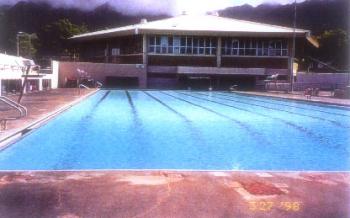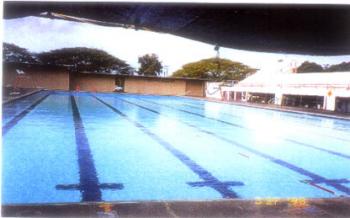Navy Seal Drowns in Shallow End of Honolulu Municipal Swimming Pool


On March 26, 1998, a Navy Seal who was training for the U.S. Free Diving Team, approached the two Lifeguards on duty at a municipal swimming pool and explained he was training to hold his breath for a prolonged period of time while underwater in order to gain a spot on the U.S. Free Diving Team. The Lifeguards gave the individual permission to practice in the shallow end of the pool. This individual then went to the shallow end, directly in front of the Lifeguard stand, went through a series of breathing and swimming exercises, then hyperventilated and attempted to hold his breath, while still located in the shallow end directly in front of the Lifeguard stand. In order to assist him in staying underwater, he draped a weight belt across his hips.
Meanwhile the Lifeguards, rather than being appropriately stationed in the elevated Lifeguard stands, both sat together under the tarp on deck-level bleachers on the opposite end of the pool. According to testimony provided by the Lifeguards, they lost site of this individual, and several patrons approached the Lifeguards and asked by the man was laying on the bottom of the pool. Their reply was that he was practicing holding his breath.
Approximately 30 minutes after the individual submerged himself in the shallow end of the water, the Lifeguards investigated the potential incident and when they realized he was in trouble, they entered the water and removed him. Emergency resuscitation procedures were not effective because of the prolonged submersion time.
The Lifeguards had failed to recognize the risk this individual was engaged in by hyperventilating and prolonged breath-holding underwater without direct one-on-one supervision by another responsible adult. They should have either prevented the individual from engaging in this activity, or should have provided direct vigilant supervision of him.
The Lifeguards failed to provide vigilant and effective surveillance of the pool and the surrounding area to (A) enforce rules and regulations; (B) assess the status of all patrons in and around the water; (C) perform rescues when required. Their surveillance was entirely ineffective in that they did not conform to both the 30-Second Surveillance Rule or the 10/20 Surveillance/Response Rule. Because of their failure to recognize the incident or its potential, they were not able to effectively manage the incident, due to the prolonged submersion time of the victim.
It was our opinion that the Lifeguard personnel at this facility failed to prevent the drowning incident of this individual by prohibiting him from engaging in this activity. They failed to recognize his distress once he lost consciousness while underwater. And, because of the prolonged delay in recognizing his distress, the possibility of a successful rescue/resuscitation was non-existent.


